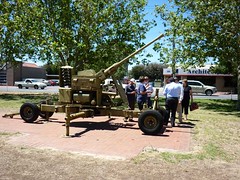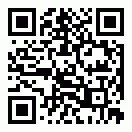Attention Moodlers...
The date for the iMoot global online conference (31 timezones, 210 countries) has been changed.
It will now start on February 4, 2010 instead of the previously advertised start date of January 7.
Monday, December 28, 2009
Sunday, December 27, 2009
What's your Twitter account worth?
Checked out one more of the plethora of Twitter tools.
It's called, 'What's your Twitter account worth?'
Apparently its worth $112 and my rank is #18961 out of 102437)
I guess it's something to do with the fact that major search engines are now trawling the twitterverse and integrating relevant tweets into results to add that 'real-time' or near critical and much valued element to searches.
Or?
$112
It's called, 'What's your Twitter account worth?'
Apparently its worth $112 and my rank is #18961 out of 102437)
I guess it's something to do with the fact that major search engines are now trawling the twitterverse and integrating relevant tweets into results to add that 'real-time' or near critical and much valued element to searches.
Or?
$112
Created by WhatsMyTwitterAccountWorth.com
Another couple of interesting Twitter tools are the TPS or Tweet Positioning System which adds a spatial dimension to conversations and Snap Bird to help re-find the tweets that got away!
Labels:
search,
Twitter,
twittertools
Friday, December 18, 2009
Moodle Cool Course competition extended
The Moodle Cool Course competition has been extended into the new year.
The new closing date is 19 January 2010.
"The purpose of the Cool Course Competition is to encourage people to donate great Moodle demo courses for our Moodle demo site and to start building our demo community hub for Moodle 2.0."
(Helen Foster)
Check out the existing entries on the site.
The new closing date is 19 January 2010.
"The purpose of the Cool Course Competition is to encourage people to donate great Moodle demo courses for our Moodle demo site and to start building our demo community hub for Moodle 2.0."
(Helen Foster)
Check out the existing entries on the site.
Thursday, December 17, 2009
Social Media and Learning2.0
The use of Social Media, so popular for social networking, is expanding into business, government and education worlds. Many companies are beginning to embrace the use of new social networking / media tools for promotion, marketing, engagement and interaction with clients and staff development but approaches and guidelines vary. These reports and resources outline a few examples.
Many educators see the potential of social media / web2.0 for teaching and learning and their own professional learning but access is often restricted in schools and filtering is an issue, as discussed in many blog posts.
As use of social media becomes more widespread in the community, learning2.0 research reports are of interest, including 'Learning 2.0: The Impact of Web 2.0 Innovations on Education and Training in Europe' - Final Report (2009) - European Commission Joint Research Centre. This 'describes how the emergence of new technologies can foster development of innovative practices.' It provides pointers for new directions and opportunities using new tools and new approaches in teaching and learning.
Web 2.0 Innovations on Education and Training in Europe' - Final Report (2009) - European Commission Joint Research Centre. This 'describes how the emergence of new technologies can foster development of innovative practices.' It provides pointers for new directions and opportunities using new tools and new approaches in teaching and learning.
Telstra (Australia) has come up with a new staff training guide for social media, the 3Rs of social engagement, for their 40,000 employees, as outlined in a recent post on Mashable. The '3Rs' are identified as responsibility, respect & representation. This online training package includes a comic style flip book with media clips.
The 'Ten Commandments of Social Media' by Robb Clarke aims to provide an easy to read personal guide to operating in an ethical manner, to not only 'make you a better person' but to also ensure a 'more appreciative' bunch of followers. Again, ethics are highlighted.
Social media, eg Twitter, is a vital component of developing and nurturing an educator's professional learning network (PLN) in a connected world and for lifelong learning in the digital age.
Many educators see the potential of social media / web2.0 for teaching and learning and their own professional learning but access is often restricted in schools and filtering is an issue, as discussed in many blog posts.
As use of social media becomes more widespread in the community, learning2.0 research reports are of interest, including 'Learning 2.0: The Impact of
 Web 2.0 Innovations on Education and Training in Europe' - Final Report (2009) - European Commission Joint Research Centre. This 'describes how the emergence of new technologies can foster development of innovative practices.' It provides pointers for new directions and opportunities using new tools and new approaches in teaching and learning.
Web 2.0 Innovations on Education and Training in Europe' - Final Report (2009) - European Commission Joint Research Centre. This 'describes how the emergence of new technologies can foster development of innovative practices.' It provides pointers for new directions and opportunities using new tools and new approaches in teaching and learning.The Australian Government Gov2 taskforce is about to release a report, 'Engage -- Getting on with Government 2.0', which is expected to outline how the use of new social media technologies can help to make public sector services more efficient and to better meet the needs of the community.
Image by woodleywonderworks
http://www.flickr.com/photos/73645804@N00/3328850666
Telstra (Australia) has come up with a new staff training guide for social media, the 3Rs of social engagement, for their 40,000 employees, as outlined in a recent post on Mashable. The '3Rs' are identified as responsibility, respect & representation. This online training package includes a comic style flip book with media clips.
The 'Ten Commandments of Social Media' by Robb Clarke aims to provide an easy to read personal guide to operating in an ethical manner, to not only 'make you a better person' but to also ensure a 'more appreciative' bunch of followers. Again, ethics are highlighted.
Social media, eg Twitter, is a vital component of developing and nurturing an educator's professional learning network (PLN) in a connected world and for lifelong learning in the digital age.
Labels:
education,
learning2.0,
PLN,
social media,
Twitter
Wednesday, December 16, 2009
Creativity, QRCodes and Geocaching
This week some colleagues carried out an activity, combining the use of QRCodes and geocaching. It was part of a collaborative experience and sharing of knowledge after a team meeting. (Check a short explanation of QRCodes here).
We organised the route to suit a walk back from a lunch break and used the QRCodes and code readers on iPhones to scan and then locate the prize - a heritage item (40mm anti aircraft gun) located in the middle of Port Road at Hindmarsh.
One member of the group, Paul created the original QRCode for the team and had secreted another at the spot. Once found and scanned, the QRCode link provided the essential additional information we needed, via a mobile site Paul had created.
My Flickr photo (Southoz) shows the team in the vicinity of the heritage 'bofors gun' as we checked out Paul's mobile site after scanning the hidden QRCode.
 Next, the team intended to use an iPhone app to locate a geocache nearby that was created as part of a previous teacher workshop. This geocache has been registered on Geocaching.com since 2004 (Pathway to the sea and hills) GCHTVX - check the Google map on the site in the vicinity of the brewery at Thebarton.
Next, the team intended to use an iPhone app to locate a geocache nearby that was created as part of a previous teacher workshop. This geocache has been registered on Geocaching.com since 2004 (Pathway to the sea and hills) GCHTVX - check the Google map on the site in the vicinity of the brewery at Thebarton.
It is a traditional cache, easy level of difficulty and easy terrain, to suit a group pf teachers getting started with geocaching. The site provides a very useful clue to locate the geocache.
It has been discovered quite a few times in the past 5 years and is in need of a little TLC. Geocaching is even more popular now as an adventure activity, especially for family groups.
There is a lot of potential in using Geocaching and QRCodes creatively in education - literacy, numeracy, ICT, problem solving, teamwork and collaboration. The greater shift towards mobile and anywhere, anytime learning, increasing accessibility and connectedness and new tools make this easier than before.
I recently discovered the excellent BeQRious site (via my Twitter PLN) which has a generator and many examples of use of QRCodes in a range of settings. Check my Delicious bookmarks for QRCodes for other links.
Another area of interest is augmented reality and I am currently exploring Layar.and Google Goggles. Check the video.
Augmented Planet also has an interesting recent post on Google Goggles and Augmented Reality.
We organised the route to suit a walk back from a lunch break and used the QRCodes and code readers on iPhones to scan and then locate the prize - a heritage item (40mm anti aircraft gun) located in the middle of Port Road at Hindmarsh.
One member of the group, Paul created the original QRCode for the team and had secreted another at the spot. Once found and scanned, the QRCode link provided the essential additional information we needed, via a mobile site Paul had created.
My Flickr photo (Southoz) shows the team in the vicinity of the heritage 'bofors gun' as we checked out Paul's mobile site after scanning the hidden QRCode.
 Next, the team intended to use an iPhone app to locate a geocache nearby that was created as part of a previous teacher workshop. This geocache has been registered on Geocaching.com since 2004 (Pathway to the sea and hills) GCHTVX - check the Google map on the site in the vicinity of the brewery at Thebarton.
Next, the team intended to use an iPhone app to locate a geocache nearby that was created as part of a previous teacher workshop. This geocache has been registered on Geocaching.com since 2004 (Pathway to the sea and hills) GCHTVX - check the Google map on the site in the vicinity of the brewery at Thebarton.It is a traditional cache, easy level of difficulty and easy terrain, to suit a group pf teachers getting started with geocaching. The site provides a very useful clue to locate the geocache.
It has been discovered quite a few times in the past 5 years and is in need of a little TLC. Geocaching is even more popular now as an adventure activity, especially for family groups.
There is a lot of potential in using Geocaching and QRCodes creatively in education - literacy, numeracy, ICT, problem solving, teamwork and collaboration. The greater shift towards mobile and anywhere, anytime learning, increasing accessibility and connectedness and new tools make this easier than before.
I recently discovered the excellent BeQRious site (via my Twitter PLN) which has a generator and many examples of use of QRCodes in a range of settings. Check my Delicious bookmarks for QRCodes for other links.
Another area of interest is augmented reality and I am currently exploring Layar.and Google Goggles. Check the video.
Augmented Planet also has an interesting recent post on Google Goggles and Augmented Reality.
Labels:
augmented reality,
creativity,
geocaching,
QRCodes
Subscribe to:
Posts (Atom)




